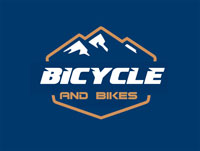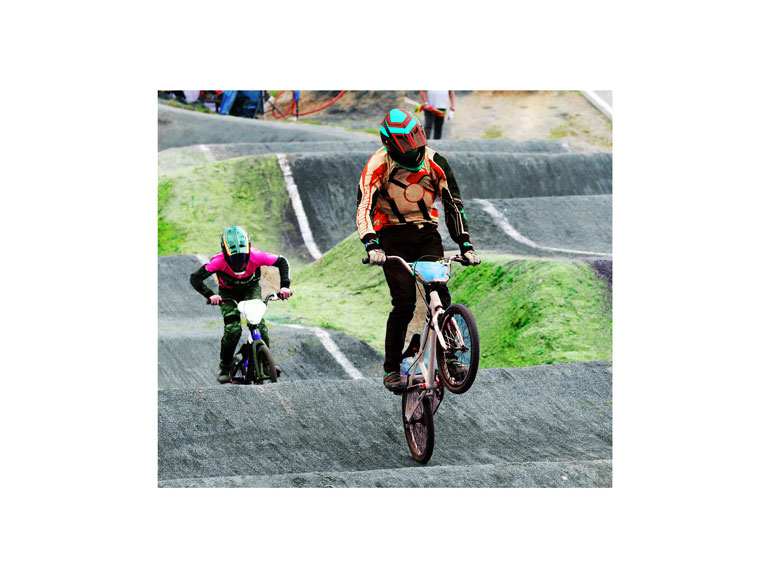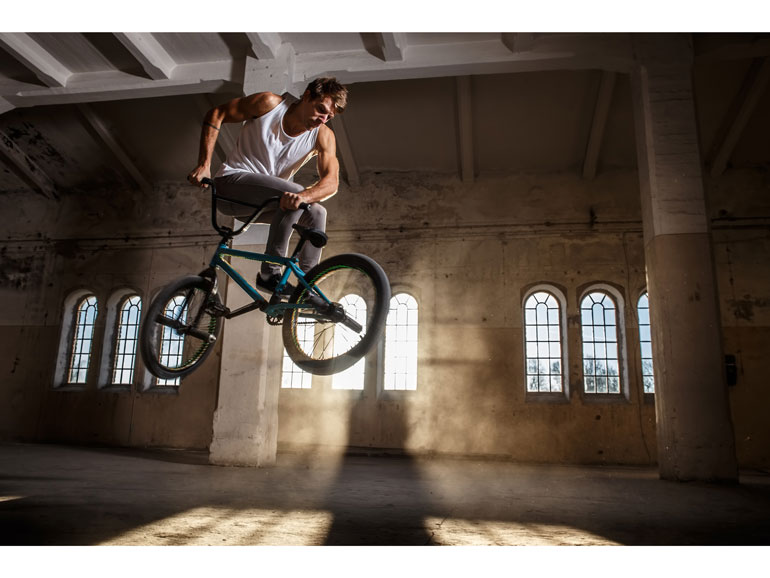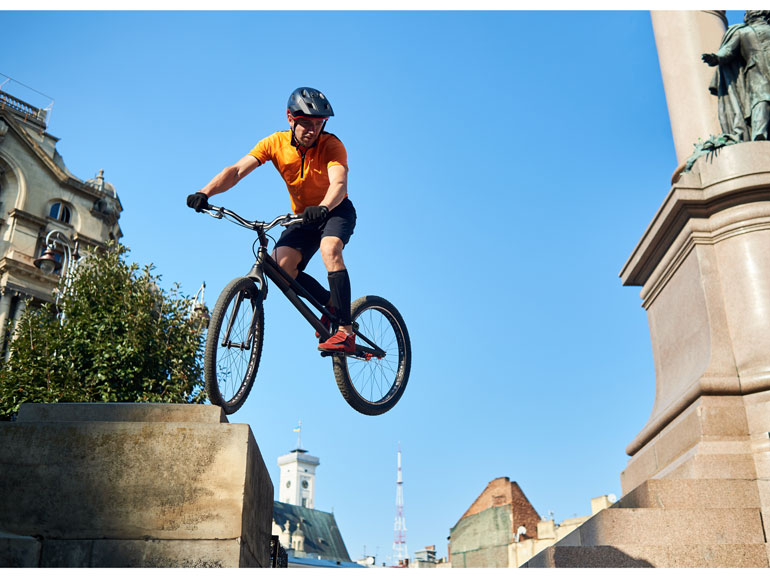Exploring BMX Racing
Uncovering its Rich History, Analyzing Bike Design, and Highlighting Exciting Stunts
BMX Racing Bikes
Embodying the exhilaration of speed, precision, and fierce competition, BMX racing bikes offer an unmatched ride experience.
Tailored specifically for the adrenaline-fueled sport of BMX racing, these bicycles not only symbolize a rich, unique history but also showcase distinct structural features that distinguish them from other bikes.
Offering an electrifying fusion of agility, strength, and speed, BMX racing bikes lay the groundwork for an array of thrilling moves and competitive events.
The exciting world of BMX racing, thus, begins with these special bicycles, each designed to propel riders to new heights of performance and excitement.
A Niche in History of BMX Racing
The history of BMX racing bikes is deeply interwoven with the origins and development of BMX (Bicycle Motocross) as a sport.
In the early 1970s, BMX racing originated in Southern California, inspired by the motocross stars of the time.
Kids started to emulate their motorbike heroes on their bicycles, creating their own tracks and jumps in vacant lots and open fields.
These bikes were usually the everyday street bicycles modified to resemble motocross bikes.
As the sport gained popularity, the need for specialized BMX bikes became clear.
Early BMX racing bikes, introduced in the mid-1970s, were essentially rugged versions of road bicycles.
They had more durable frames, wider tires, and improved brakes, which allowed them to navigate the dirt tracks better.
Companies like Mongoose and Redline became some of the early pioneers of producing BMX-specific bikes.
By the 1980s, BMX racing had exploded in popularity, and the design of BMX race bikes evolved significantly.
Lighter materials like chromoly steel and aluminum started to be used for the frames, and the bikes got smaller for better maneuverability.
The sport’s debut at the 2008 Beijing Olympics was a significant milestone and led to further advancements in BMX bike technology.
Today’s BMX racing bikes are highly specialized machines, with advanced materials and design features like carbon fiber frames, larger rear sprockets for rapid acceleration, and narrower, faster-rolling tires.
Thus, the history of BMX racing bikes is a dynamic one, reflecting the growth and evolution of the sport itself, from backyard fun to an internationally recognized Olympic sport.
BMX Racing Bike Structure and Materials
Engineered for Speed
The structure of a BMX racing bike is specifically designed to deliver maximum performance on dirt tracks.
The bike frames, typically made of lightweight yet durable materials like aluminum or carbon fiber, allow racers to achieve top speeds while enduring the strenuous conditions of a race.
These frames usually have a lengthened top tube to enhance stability and control during high-velocity racing scenarios.
BMX Race bikes generally have a wheel size of 20 inches, which allows for rapid acceleration.
Their tires are narrower with smaller treads compared to freestyle or dirt jump BMX bikes, facilitating a smoother ride and superior traction on compact dirt surfaces.
To reach high speeds, especially on straight tracks, Race BMX bikes employ a larger chainring and smaller rear cog to realize high gear ratios.
To ensure dependable braking during high-speed maneuvers, these bikes are outfitted with either V-brakes or disc brakes.
This provision is vital for maintaining safety and control.
Dirt Jump BMX Bikes
Dirt Jump BMX bikes are built for off-road enthusiasts who enjoy aerial stunts on dirt tracks.
They feature a robust frame, often made of chromoly steel or aluminum, designed to withstand high-impact landings.
These bikes are equipped with a front suspension fork, large, knobby tires for superior grip on loose surfaces, and typically, single-speed gearing.
They usually have only a rear brake for adequate stopping power.
Ideal for riders who love executing tricks on dirt mounds, these bikes provide a thrilling, adrenaline-fueled cycling experience.
Park BMX Bikes
Specifically designed for skate park riding, park BMX bikes combine elements of race and freestyle bikes.
Park BMX bikes are a type of freestyle BMX specifically designed to perform tricks and stunts in skate parks, which feature a variety of ramps, rails, and bowls.
These bikes are built to handle the rigors of aerial stunts, quick turns, and hard landings that come with park riding.
They feature lightweight frames, 20-inch wheels, shorter rear ends for maneuverability, and components suited for tricks on ramps and bowls.
Look for features like gyro systems for handlebar spins and pegs for grinding on rails and ledges.
Street BMX Bikes
Designed for urban environments, street BMX bikes are made to handle jumps off curbs, rail slides, and other street obstacles.
They often share many of the robust features of freestyle bikes, such as durable frames, 360-degree rotating handlebars, and front and rear brakes.
However, they often have slicker, low-profile tires for better traction on pavement.
Flatland BMX Bikes
A niche within freestyle BMX, these bikes are designed specifically for performing tricks on flat surfaces.
They have a lightweight design, shorter wheelbase for quick direction changes, and often feature front and rear pegs.
Cruiser BMX Bikes
These bikes are similar to race BMX bikes, but they feature larger 24-inch wheels for a more comfortable ride, especially over longer distances or rougher terrain.
Cruiser BMX bikes are popular among older riders or those looking for a blend of speed and comfort.
Vert BMX Bikes
This is a variant of a freestyle BMX designed specifically for vert riding (aka vertical ramp or half pipe riding).
These bikes are typically very lightweight with a sturdy frame, enabling riders to get maximum height when launching off ramps.
Junior BMX Bikes
These are smaller bikes designed for young children just getting into BMX riding.
They have smaller frames and wheels (often 16-18 inches) and are lighter, making them easier for younger riders to handle.
Choosing a BMX
Each type of BMX bike is designed with a specific style of riding in mind, so it’s essential to choose a bike that aligns with the type of BMX riding you’re most interested in.
BMX Riding Techniques and Tricks
Bunny Hop
The bunny hop is a fundamental skill that involves lifting both wheels off the ground simultaneously.
Start by compressing your body and bike, then explode upward, pulling up on the handlebars and tucking your knees.
Practice timing and smooth execution to maximize height and control.
Manual
A manual is a wheelie performed without pedaling.
To execute a manual, shift your weight toward the rear of the bike while balancing on the rear wheel.
Use slight adjustments in body positioning and subtle brake modulation to maintain balance and control.
Grinds
Grinds involve sliding along obstacles using the pegs or the bike’s frame.
Begin by learning basic grinds like the feeble grind or double peg grind on low ledges or rails.
As you progress, experiment with more advanced grinds like the smith grind, icepick grind, or crooked grind.
Air Tricks
BMX offers a wide range of aerial tricks to explore.
Start with basic tricks like the tabletop, where you level out the bike in mid-air.
Progress to more advanced tricks like the bar spin (spinning the handlebars) or the tailwhip (spinning the frame around the rider’s body).
Practice proper bike control, body positioning, and timing for successful execution.
BMX Bike Safety & Protective Gear for Beginners
Helmet
Wearing a helmet is essential for BMX riding.
Look for a certified BMX-specific helmet that provides full coverage, impact protection, and a secure fit.
Ensure proper helmet positioning and strap adjustment for maximum effectiveness.
.
Elbow and Knee Pads
Protect your joints with durable and properly fitted elbow and knee pads.
Choose pads with hard plastic or foam padding, reinforced caps, and secure straps for optimal protection during falls or crashes.
.
Gloves
BMX gloves provide grip, protection, and added comfort.
Look for gloves with padded palms, breathable materials, and reinforced stitching.
They offer better grip on the handlebars and protect your hands during impacts or slides.
Shoes
Opt for flat-soled BMX shoes with excellent traction and durability.
Look for shoes with reinforced toe caps, grippy outsoles, and adequate ankle support.
Flat-soled shoes enhance pedal grip and allow for better bike control.
Commonly Asked Questions About BMX Bike Riding
What is BMX riding?
BMX riding originated from motocross racing and is a type of off-road bicycle racing.
It includes several styles such as racing, dirt jumping, freestyle (which encompasses park, street, and flatland), and vertical ramp or vert riding.
What is the best BMX bike for beginners?
For beginners, a freestyle BMX bike is often the best choice due to its versatility.
It’s suitable for street riding, park riding, and performing tricks. Brands like Mongoose and Redline often have good beginner options.
What is the difference between a BMX bike and a regular bike?
BMX bikes typically have smaller frames, are sturdier, and have only one gear.
They’re designed for off-road racing, stunts, and jumps, whereas regular bikes, or road bikes, are designed for commuting and road travel.
How do I choose the right size BMX bike?
BMX bikes are generally measured by the length of the top tube.
Riders should be able to comfortably reach the handlebars from the seat.
For kids, wheel size is a good indicator: 16″ for ages 5-7, 18″ for ages 6-9, and 20″ for ages 8-14 and adults.
Can BMX bikes be used for commuting?
While BMX bikes are designed for off-road and trick riding, they can be used for short-distance commuting.
However, they’re not as efficient or comfortable as road bikes for longer commutes due to their single gear and small frame size.
What safety gear do I need for BMX riding?
At a minimum, you should wear a helmet. Additional protective gear such as knee and elbow pads, gloves, and a chest protector can also be beneficial, particularly for BMX racing or trick riding.
How can I improve at BMX riding?
Start with the basics and gradually work your way up to more complex skills.
Regular practice, ideally under the guidance of a more experienced rider or a coach, will improve your technique and confidence.
It’s also important to keep your bike well-maintained and to always use the appropriate safety gear.
Is BMX a wheelie bike?
While you can certainly perform a wheelie on a BMX bike, it’s important to note that BMX bikes aren’t specifically designed for that purpose.
BMX, standing for Bicycle Motocross, refers to a type of bike that’s designed for off-road racing, jumps, and tricks across several styles such as racing, dirt jumping, freestyle, and vert riding.
A wheelie, which involves lifting the front wheel off the ground and balancing on the rear wheel while moving, is a popular trick in BMX riding.
However, it’s just one of many tricks that can be performed on a BMX bike. Any bike that can lift its front wheel off the ground and balance the rider’s weight can technically be used to perform a wheelie.
Is BMX an extreme sport?
Yes, BMX is often considered an extreme sport due to the high levels of physical exertion, skill, and risk involved.
BMX racing, which involves high-speed sprints on dirt tracks with jumps and tight turns, requires strength, agility, and quick reflexes.
Similarly, BMX freestyle, which includes styles like park, street, and vert riding, demands precise control, balance, and creativity to execute complex tricks and stunts, often at significant heights.
It’s worth noting that BMX freestyle park made its debut as an official Olympic event in the 2020 Tokyo Olympics, further cementing its status as a recognized extreme sport.
*Safety gear, including helmets, knee and elbow pads, gloves, and sometimes full-face helmets and body armor, is strongly recommended due to the risk of falls and crashes.
Is BMX for off-road riding?
Yes, BMX, which stands for Bicycle Motocross, was originally developed for off-road riding and racing.
The sport of BMX started with racing on dirt tracks inspired by motocross racing, featuring jumps, berms, and other obstacles. Today, BMX racing remains a popular form of off-road bicycle racing.
BMX bikes are well-suited for off-road riding because of their durability, agility, and the ability to handle jumps and bumps. The knobby tires common on BMX bikes offer better traction on dirt surfaces, and the strong, compact frames can withstand the demands of off-road riding.
However, BMX has expanded far beyond its off-road origins. Different styles of BMX riding now include street riding, park riding (in purpose-built skate parks), vert (on half-pipes), and flatland (on flat surfaces).
Each of these disciplines has specific BMX bike designs tailored to their unique needs.
What’s the difference between Park and Street BMX? Are they the same?
While Park BMX and Street BMX bikes share many similarities due to their freestyle origins, they’re tailored for different environments and therefore have some distinct characteristics.
Park BMX Bikes
Are designed for skate parks, which usually feature smooth surfaces and various ramps, bowls, and rails.
These bikes are built to handle high-flying tricks, spins, and flips. Features often include:
Smooth Tires: For better traction on the polished surfaces of a skate park.
Lighter Frames: To make airborne tricks easier.
Pegs and Rotors: For tricks involving grinding or handlebar spinning.
Street BMX Bikes
Street BMX Bikes, on the other hand, are designed for urban environments and street features like stairs, ledges, and handrails.
These bikes are built to handle the hard impacts and variable surfaces found in urban settings. Features often include:
Stronger Frames and Wheels: To endure hard landings and the rigors of urban riding.
Pegs: For grinding on rails and ledges.
Thicker Tires: To handle different surfaces and to offer more cushion for landings.
In essence, while both types of bikes can handle tricks, Park BMX bikes are more about high-flying stunts and agility, while Street BMX bikes are about durability and versatility in various urban environments.
However, the line between them can sometimes blur, and many riders use their bikes interchangeably between park and street riding.





 bicycleandbikes.com
bicycleandbikes.com